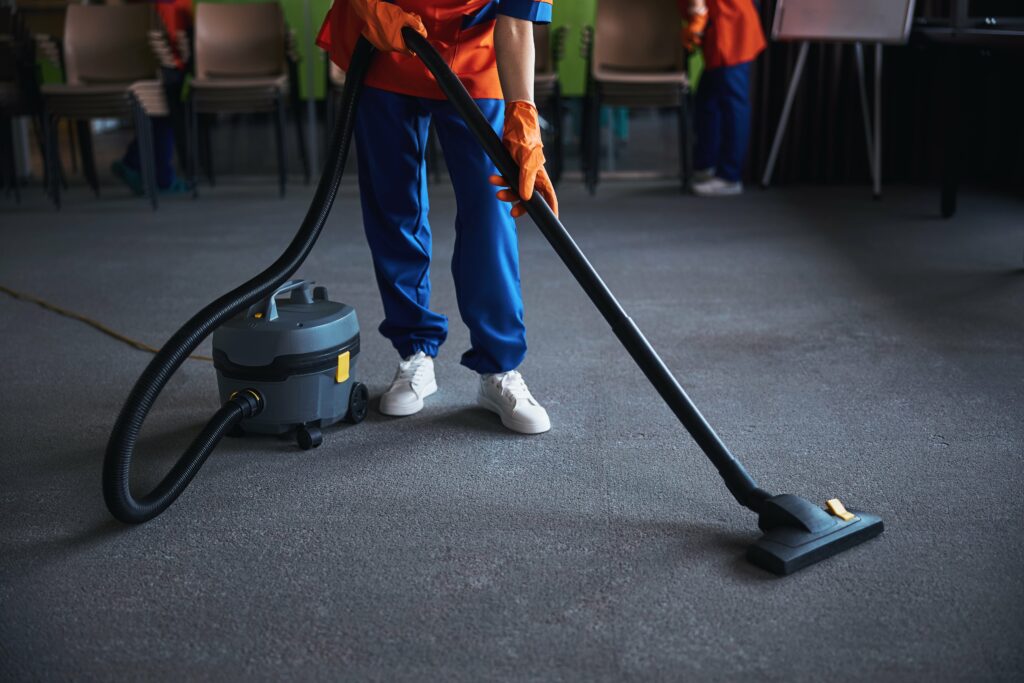Tiny but powerful, fleas can cause trouble for our pets and us. These bloodsuckers are scientifically called Ctenocephalides felis. They aim to bring discomfort and annoyance.
But why is flea control so crucial? The answer lies in the potential health risks they pose to our pets and us.
Fleas are more than just nuisances; they carry diseases that can affect both animals and humans. One of the most well-known diseases transmitted by fleas is the bubonic plague.
While rare nowadays, it’s a chilling reminder of the potential dangers that fleas can bring into our lives. Pets, with their warm fur, are particularly vulnerable to flea infestations.
Fleas make our pets itch and can cause hair loss or allergic reactions. If one pet gets fleas, others nearby are likely to get them too.
Overview of common flea control methods and products

Now that we know it’s important to keep blood-hungry critters away from pets, let’s look at common flea control methods. A popular first pest control method is topical treatments—small tubes with liquid applied directly to your pet’s skin.
These solutions have ingredients to kill adult fleas and disrupt their life cycle by targeting eggs or larvae in your pet’s fur. Another option is using collars that act as a barrier against these persistent pests.
Infused with chemicals that repel or kill fleas on contact, these collars offer protection for several months. While not the most stylish accessory, they can be highly effective in preventing flea and tick infestations themselves.
In addition to topical treatments and collars, use sprays and shampoos for flea control. Sprays treat fleas on pets and their surroundings, like furniture cushions or pet bedding, while shampoos eliminate fleas during bath time.
Understanding flea control is crucial to protect pets and ourselves from risks. With many products available, find what works best for you and your furry friends to keep those bloodsuckers away!
Overview of Flea Control Products: Flea Collars, Topical Treatments, Oral Medications
Embark on an exploration of the wide array of flea control products available, including flea collars, topical treatments, and oral medications. Understand the mechanisms behind each product and how they effectively combat fleas. This comprehensive overview will assist you in making informed decisions for your pet’s well-being.
How to Choose the Right Flea Control Product for Your Pet
Choosing the right flea control product is crucial for effective treatment. Navigate the options and learn how to choose the right flea control product for your pet’s specific needs. Consider factors such as your pet’s health, age, and the severity of the infestation. Make informed decisions to keep your furry friends happy and flea-free.
Using Flea Foggers and Sprays in Your Home: A Comprehensive Guide
Discover the ins and outs of using flea foggers and sprays as part of your home flea control strategy. Uncover the benefits and precautions associated with these methods. This comprehensive guide provides insights into the effective use of foggers and sprays to eliminate fleas from your living spaces.
Pros and Cons of Different Flea Control Methods: Making Informed Choices
Explore the pros and cons of different flea control methods to make informed choices for your pet and home. From topical treatments to oral medications, weigh the advantages and disadvantages of each method. This knowledge empowers you to tailor your flea control approach to suit your specific circumstances.
Flea Life Cycle and Behavior
Detailed explanation of the four stages in a flea’s life cycle
To effectively combat fleas, it is crucial to have a solid understanding of their life cycle. Fleas undergo complete metamorphosis, which consists of four distinct stages: egg, larva, pupa, and adult. It all starts when an adult female flea finds its way onto your beloved pet’s fur.
Once there, they quickly begin laying eggs that easily fall off and scatter throughout your home. These tiny eggs are almost invisible to the naked eye.
Within two days or so, these eggs hatch into larvae. These worm-like creatures are about 2-5 millimeters long and are blind.
They have an insatiable appetite for organic matter like flea feces and dead skin cells shed by your pet or you. During this stage, larvae feed on this debris for approximately 5-15 days as they grow larger.
After feeding sufficiently, the larvae spin cocoons around themselves and enter the pupal stage. This cocoon acts as a protective barrier while the flea undergoes metamorphosis within it.
The pupal stage can last 7 days to several months, depending on temperature and humidity. When it’s warm and vibrations are present, an adult flea emerges from its cocoon, fully developed and ready to bother your pets again!
They immediately seek out a host (your pet) for a blood meal to survive. Once they find one, their cycle repeats itself—laying eggs in large quantities—starting the whole process over again.
Insight into fleas’ behavior, feeding habits, and preferred habitats

Fleas are persistent little pests with some interesting behavioral traits worth knowing about. Adult fleas prefer warm-blooded animals like cats or dogs as their primary hosts. They have special legs for jumping, allowing them to leap great distances despite their small size.
This ability allows fleas to easily move from one host to another or from the environment back onto a pet. Adult fleas only feed on blood and need it regularly to survive and reproduce.
When they infest your pet, they use their sharp mouthparts to pierce the skin and consume blood. The saliva they inject while feeding may cause itching or allergic reactions in sensitive pets or humans.
Regarding preferred habitats, fleas are particularly fond of warm and humid environments. They tend to congregate in areas where pets frequently rest or sleep such as bedding, carpets, furniture, and even cracks in the floor.
Flea larvae like dark places, like floorboard crevices or deep in your pet’s fur, making them hard to see. Knowing these aspects of flea behavior is crucial for effective elimination strategies.
Reduce flea populations and keep pets comfy by targeting flea development at each life cycle stage and disrupting their habitats. Stay tuned for our next sections on effective flea control products and methods!!
Chemical-based Flea Control Products
An In-depth Analysis of Popular Chemical-based Flea Control Products
To combat flea infestations, many pet owners use chemical-based flea control products. There are two common types: spot-on treatments and sprays. Spot-on flea treatments are applied directly to the pet’s skin, often on the back of their neck or between the shoulder blades.
These treatments contain active ingredients that kill adult fleas and prevent their reproduction. Sprays are used for larger areas. Bedding, carpets, and furniture tend to be good places to target these fleas.
Discussion on Effectiveness and Potential Side Effects
Chemical flea control products are popular for quickly eradicating and controlling fleas everywhere. The active ingredients target adult fleas, stop their reproduction, and prevent further infestations.
Follow the manufacturer’s instructions carefully for maximum efficiency. Chemical-based products, while effective against most fleas, however, may have side effects.
Pets may get irritated or have allergies from these products. Watch your pets closely after applying and consult a vet if any issues arise.
Tips for Choosing the Right Chemical-based Product
Choose the right chemical flea control based on factors like your pet’s age, size, and health. Use a product designed for your pet’s species to avoid toxicity issues. For young or small pets, opt for spot-on treatments with lower concentrations of active ingredients.
This reduces the risk of adverse reactions due to overdosing. If your pet has health issues or takes medication, talk to a vet before using chemical-based products to ensure your pet’s treatment safety.
Read product labels carefully for dosage and application instructions. Consult your vet to find the right chemical-based flea control product for your pet’s needs.
Choose the right chemical-based flea control for your dog to combat fleas with minimal risks. Ensure your furry friend stays comfortable and protected best flea and for overall well-being.
Natural Flea Control Methods
Exploring Nature’s Solutions: Essential Oils and Herbal Remedies
For fighting fleas, natural options like essential oils and herbs are available. Lavender, peppermint, cedarwood, and lemon eucalyptus oils all work toward combating fleas.
Mix lavender, peppermint, cedarwood, or lemon eucalyptus with water or coconut oil. Apply the mixture to your pet’s fur or use it in homemade sprays to repel fleas. You can also use herbal remedies like neem oil and chamomile for natural flea control.
The Efficacy of Nature’s Arsenal: Repelling and Killing Fleas without Harmful Chemicals
Now, you might be wondering, do these natural alternatives actually work? Well, the answer lies in their active compounds that possess insect-repelling properties.
Lavender oil and other essential oils mess with fleas’ senses, keeping them away from your pet. Herbal remedies can also mess up flea reproduction or kill them on contact.
Natural methods can repel and kill fleas without chemicals. Their effectiveness depends on the severity of the flea infestation and your pet’s sensitivities. Consult your vet before using any natural remedy on your pet.
Precautions for Safe Usage: Taking Care When Using Natural Flea Control Methods
Be cautious with natural flea control. Essential oils can be toxic if ingested by pets, so follow dilution ratios carefully and avoid applying near the mouth or eyes. Some herbal remedies may not be suitable for pets with health conditions or for pregnant/nursing animals.
It is always wise to conduct a patch test on a small area of your pet’s skin before using any new natural flea control product extensively. Remember, natural does not always mean harmless, and each pet may react differently to various natural flea and other tick treatment products used.
Keep your furry friend safe by understanding potential risks and taking precautions. Use nature’s power to control fleas effectively and ensure your pets’ safety.
Explore natural flea control as an alternative to chemicals. Research and consider your pet’s needs for effective and safe solutions.
Environmental Flea Control Measures

Explanation of how environmental factors contribute to flea infestations
Flea infestations depend on more than just fleas on pets; environmental factors matter too. Fleas love warmth and humidity, so homes with central heating and carpets create ideal breeding grounds.
Additionally, fleas can hitch a ride indoors through the presence of stray or feral animals in the vicinity. Understanding these environmental factors helps us develop effective strategies for flea control.
Tips for keeping indoor environments clean and reducing flea populations

To combat fleas in your home, maintaining cleanliness is paramount. Vacuum regularly to get rid of fleas, eggs, and larvae in carpets and furniture. Focus on spots where pets often stay, like bedding and under furniture.
Wash pet bedding often in hot water to kill fleas and their eggs, disrupting their life cycle.
Remember to follow manufacturer guidelines for washing instructions. Another natural environmental treatment option is using steam cleaners or diatomaceous earth.
Steam cleaners kill fleas at all life stages and sanitize surfaces with high temperatures. Diatomaceous earth, a non-toxic substance, dries out adult fleas on contact when used properly.
Integrated Approach to Flea Control
Advantages of combining multiple methods for effective flea control
Many different measures can enhance the success rate of flea control. Using topical treatments and medications along with environmental control can do exactly that. These measures target both the pet and its surroundings, which can make you and your cat flea-free.
Step-by-step guide on implementing an integrated approach
1. Start by using a vet-recommended flea control product or oral medication on your pet. This helps get rid of current fleas and prevents flea allergy dermatitis by eliminating fleas and controlling ticks.
2. Take control of the flea collar environment, vacuum carpets, upholstery, and pet bedding regularly. Pay close attention to areas where fleas are likely to hide.
3. Wash all pet bedding in hot water regularly to kill fleas and eggs. This step disrupts the flea life cycle.
4. Think about using steam cleaners or diatomaceous earth in areas where fleas are a problem.
5. Practice regular grooming of your pet, such as combing with a fine-toothed comb or using a used flea comb or brush to remove any remaining fleas manually.
6. Consult with your veterinarian regarding the use of insect growth regulators (IGRs) if necessary.
Conclusion
Understand how the different issues at home can stop infestations for our pets and us. Combining different methods as an approach is the best way to control these pests. With proper care, we can create a comfortable environment for our pets and keep our homes free from these nuisances.
Frequently Asked Questions:
The most effective flea control method often involves a combination of treatments, including topical solutions, oral medications, and environmental control.
The most effective way to control fleas includes a multi-pronged approach, combining pet treatments, home environment control, and preventive measures.
The best products to get rid of fleas include flea shampoos, oral medications, topical treatments, and environmental control products.
Professional exterminators may use insecticides, IGRs (Insect Growth Regulators), and steam treatments to kill fleas effectively.








